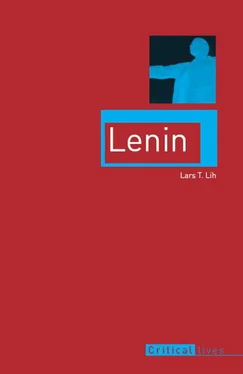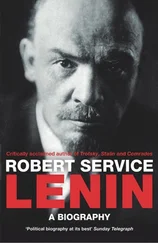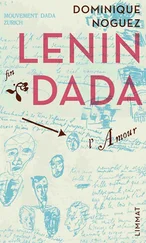Lars Lih - Lenin
Здесь есть возможность читать онлайн «Lars Lih - Lenin» весь текст электронной книги совершенно бесплатно (целиком полную версию без сокращений). В некоторых случаях можно слушать аудио, скачать через торрент в формате fb2 и присутствует краткое содержание. Город: London, Год выпуска: 2012, ISBN: 2012, Издательство: Reaktion Books, Жанр: Биографии и Мемуары, История, на английском языке. Описание произведения, (предисловие) а так же отзывы посетителей доступны на портале библиотеки ЛибКат.
- Название:Lenin
- Автор:
- Издательство:Reaktion Books
- Жанр:
- Год:2012
- Город:London
- ISBN:9781780230030
- Рейтинг книги:3 / 5. Голосов: 1
-
Избранное:Добавить в избранное
- Отзывы:
-
Ваша оценка:
- 60
- 1
- 2
- 3
- 4
- 5
Lenin: краткое содержание, описание и аннотация
Предлагаем к чтению аннотацию, описание, краткое содержание или предисловие (зависит от того, что написал сам автор книги «Lenin»). Если вы не нашли необходимую информацию о книге — напишите в комментариях, мы постараемся отыскать её.
Lenin — читать онлайн бесплатно полную книгу (весь текст) целиком
Ниже представлен текст книги, разбитый по страницам. Система сохранения места последней прочитанной страницы, позволяет с удобством читать онлайн бесплатно книгу «Lenin», без необходимости каждый раз заново искать на чём Вы остановились. Поставьте закладку, и сможете в любой момент перейти на страницу, на которой закончили чтение.
Интервал:
Закладка:
In his earlier 1915 theses, and right up to the day before he left Switzerland, Lenin had spoken of two distinct types of revolutions: the democratic revolution in Russia and the socialist revolution in Western Europe. In Lenin’s scenario the Russian revolution incites the European revolution, making the two revolutions closely linked but nevertheless separate. Accordingly Lenin never considers the possibility of socialist transformation in Russia prior to and independent of socialist revolution in Europe. The abdication of the tsar did not in itself imply any change in his outlook, since carrying the democratic revolution ‘to the end’ was still very much on the agenda. Indeed, Lenin’s first reaction to the news from Russia was to exult that the theses of October 1915 said ‘directly, clearly, exactly, how it will be with us with a revolution in Russia, and they say it one and a half years before the revolution. These theses have been remarkably confirmed, word-for-word, by the revolution.’ 23
Only in an unpublished draft written on 8 April 1917 (Lenin left for Russia on 9 April) do we find for the first time the idea of ‘steps toward socialism’ in Russia itself . The metaphor of ‘steps toward socialism’ was designedly tentative. Neither at this time nor later did Lenin argue that Russia could achieve full socialism without European revolution. Nevertheless, ‘steps toward socialism’ represents something new in his outlook. For the first time Lenin suggests that Russia can at least start moving toward socialism without waiting for European revolution. And since we are familiar with Lenin’s life-long heroic scenario, we are not surprised to find that Lenin tightly links the idea of ‘steps toward socialism’ in Russia with proletarian leadership, not of the peasantry as a whole, but of the ‘poorest peasantry’ who were themselves exploited by capitalism. 24As we shall see, the link between ‘steps toward socialism’ and class conflict within the peasantry was crucial to Lenin’s whole view of the Russian revolution.
For the time being, ‘steps toward socialism’ was just a minor note in Lenin’s rhetoric. The situation that greeted Lenin when he arrived in revolutionary Petrograd was still extremely fluid. Immediately after the abdication of the tsar on 2 March, two power centres had emerged in the nation’s capital: the Petrograd Soviet, created from below by workers and soldiers inspired by memories of 1905, and the Provisional Government, created by members of the tsarist Duma in an effort to provide elite continuity. The Proviional Government may have looked solid and imposing, but even at the beginning of the revolution it was something of a phantom, with less real power and less legitimacy than the Petro grad Soviet. In fact the Provisional Government existed only at the sufferance of the Soviet, whose leadership did not want to take on the mantle of official government authority themselves. The Soviet therefore gave support to the Provisional Government postolku-poskolku – ‘insofar as’ – the Provisional Government carried out the policies of the Soviet.
Meanwhile the situation in the country was rapidly disintegrating under the pressure of a series of interlocking crises, of which the continuing war by Russia against Germany and Austria constituted the most inexorable. The Provisional Government supported the war effort due to traditional great-power concerns. The Soviet made all sorts of diplomatic efforts to achieve a democratic peace, but in the meantime it felt that Russia had to conduct ‘revolutionary defence’ – a defence not of tsarism, but of free Russia. But the country was simply incapable of conducting an unpopular and burden some war, and a renewed military offensive in June ended in disaster.
The immediate trigger of the February revolution that overthrew the tsar was food-supply difficulties and the unbearably high cost of living, and the revolution only accelerated the spiralling economic breakdown. Tied to the crisis of the economy was the peasant demand for land. The Provisional Government insisted that such a fundamental question as land relations had to be settled by a Constitutional Assembly, but its insistence was caused less by democratic scruples than by fear of taking some very tough decisions with implications for the fundamental interests of the entire elite. No wonder that the eight-month history of the Provisional Government is one of desperate improvisation, as one hastily assembled coalition collapsed and gave way to the next. The only constant feature of these cabinets was the presence of Alexander Kerensky, a lawyer and Duma member with ties to the peasant parties. Kerensky more or less inserted himself into the very first cabinet as the representative of Soviet democracy, and gradually became almost the entire government himself. Faced with an impossible task, Kerensky made a valiant effort by means of charisma and bluster to keep Russia from imploding under the weight of its many contradictions. Coalition after coalition took over the reins of government and was promptly discredited by the ongoing war, by the accelerating economic and social collapse, by the postponement of agrarian reform.
The disenchantment of the masses with coalition government made the Bolshevik scenario seem like a plausible response to Russia’s interlocking crises. Ultimately the success of Lenin and the Bolsheviks in 1917 was based on the success of the message they sent to the workers, soldiers and peasants. This message can be conveyed in three words and a punctuation mark: ‘Take the power!’ ‘Power’ here translates vlast , a word that could also be translated as ‘sovereign authority’, the ultimate source of legitimacy and decision-making. Everybody in Russia realized that the key question that confronted the country after the abdication of the tsar was the identity of the vlast . Everybody realized that only a tverdaia vlast , a strong and tough-minded sovereign authority, could effectively respond to the multiple crises buffeting Russian society.
The Bolsheviks insisted that ‘the nature of the class that holds the vlast decides everything’ – and they meant everything . 25They told the Russian narod that as long as the vlast was controlled by their class enemies – the landowner, the capitalist, the ‘bourgeois’ in whatever form – the imperialist war would continue, the economic collapse would continue, the postponement of radical land reform would continue. Troubles would cease only when the workers as a class took the power and fulfilled their historical mission of leading the narod to revolutionary victory.
Lenin argued that a proletarian vlast was necessary for a strong and effective state. According to a common misunderstanding of Lenin’s message in 1917, however, Lenin advanced the semi-anarchist slogan of ‘smash the state!’ This distortion of Lenin’s message is taken from State and Revolution , Lenin’s most famous book from 1917. This production is based on reading done in early 1917 before the outbreak of revolution in Russia and published in 1918 and it strikingly lacks the tang of Russia during the year of revolution. It is pitched at an abstract level of socialist revolution in general and consists mainly of angry polemics about the meaning of various passages from Marx and Engels. The phrase ‘smash the state’ is shorthand for the following slogan: ‘Smash the bourgeois state and replace it with a strong and effective proletarian state.’ The bourgeois state apparatus is smashed when (a) it cannot be used to repress the revolution and (b) it is thoroughly democratized. The proletarian state is not smashed – rather, it gradually dies out as society is transformed.
Читать дальшеИнтервал:
Закладка:
Похожие книги на «Lenin»
Представляем Вашему вниманию похожие книги на «Lenin» списком для выбора. Мы отобрали схожую по названию и смыслу литературу в надежде предоставить читателям больше вариантов отыскать новые, интересные, ещё непрочитанные произведения.
Обсуждение, отзывы о книге «Lenin» и просто собственные мнения читателей. Оставьте ваши комментарии, напишите, что Вы думаете о произведении, его смысле или главных героях. Укажите что конкретно понравилось, а что нет, и почему Вы так считаете.












